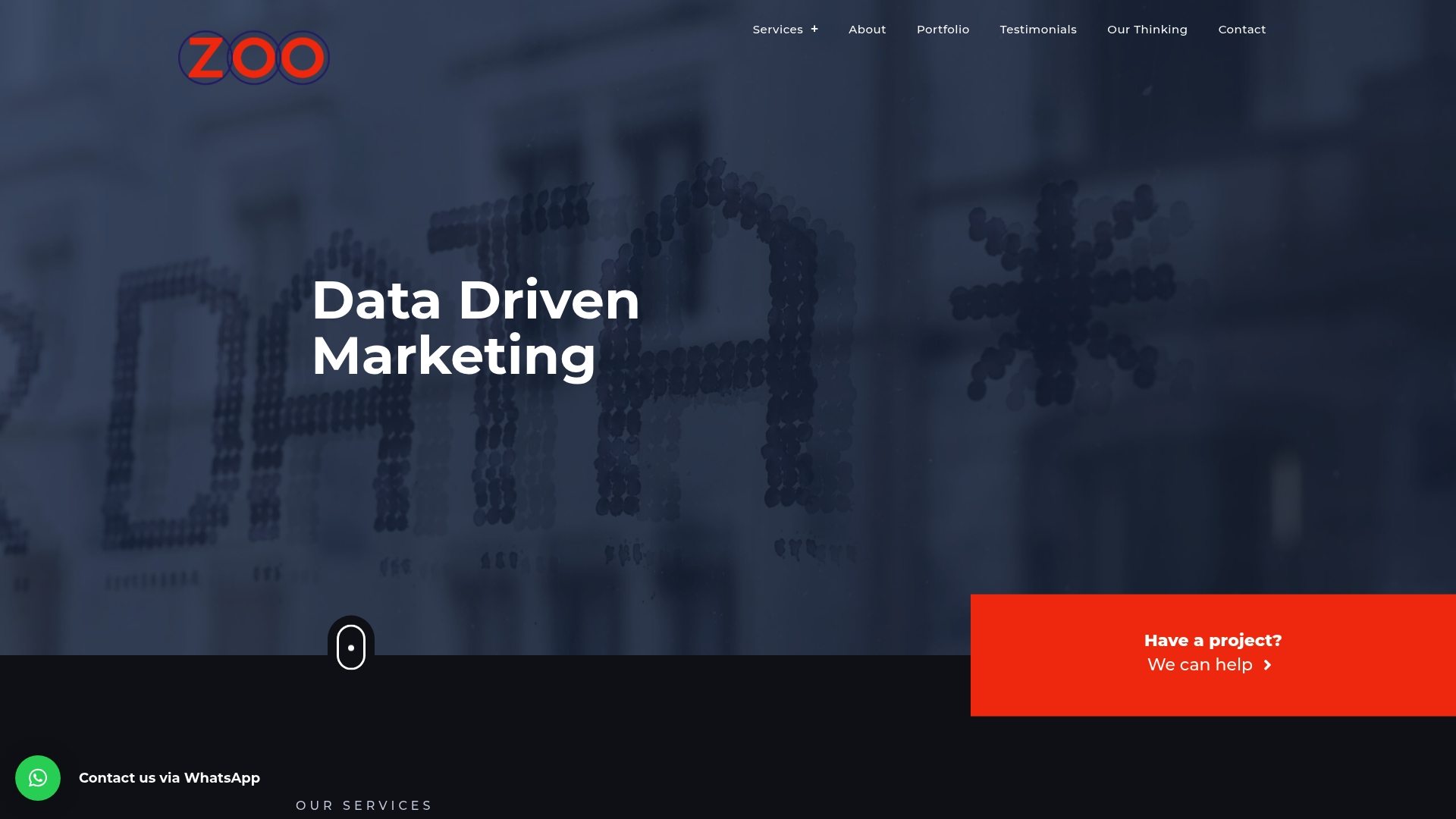Brands are always searching for ways to stand out online. Memes have gone from silly internet jokes to marketing gold and businesses using memes see up to 70% more engagement when they react within 24 hours of a trend. Most folks think sharing a funny picture will do the trick but what really matters is understanding the humour and context behind every meme. This makes meme marketing far trickier and much more powerful than it first appears.
Table of Contents
- Understanding Memes And Their Power In Marketing
- Identifying Your Target Audience For Meme Marketing
- Choosing The Right Type Of Meme For Your Brand
- Creating Relatable And Shareable Memes
- Leveraging Trending Memes For Timeliness
- Integrating Memes Into Your Overall Marketing Strategy
- Measuring The Success Of Your Meme Marketing Efforts
Quick Summary
| Takeaway | Explanation |
|---|---|
| Memes create instant relatability | Memes connect with audiences quickly by reflecting shared emotions and experiences, making them a powerful marketing tool. |
| Target audience understanding is crucial | Knowing your audience’s preferences and humor styles is vital for crafting effective meme content that resonates with them. |
| Choose meme formats wisely | Selecting the appropriate meme style can enhance brand communication, ensuring it aligns with your audience and brand identity. |
| Emphasize emotional resonance | Memes that evoke strong feelings are more likely to be shared, making emotional intelligence key in creating captivating content. |
| Integrate memes into your strategy | Memes should complement your overall marketing strategy, harmonizing with brand messaging and communication goals for greater impact. |
1: Understanding Memes and Their Power in Marketing
Memes have transformed from simple internet jokes to powerful marketing tools that can amplify brand messaging with remarkable speed and engagement. These viral pieces of digital content leverage shared cultural experiences and humor to connect with audiences in ways traditional advertising cannot. Understanding the mechanics of meme marketing requires recognizing their unique psychological appeal and viral potential.
At their core, memes are visual communication vehicles that tap into collective emotions and experiences. They spread rapidly across digital platforms because they encapsulate complex ideas or sentiments in a concise, often humorous format. For businesses looking to use memes in marketing, this means creating content that resonates authentically with target audiences.
The power of memes in marketing stems from several key characteristics:
Instant Relatability: Memes create immediate emotional connections
Low Production Cost: Requires minimal design investment compared to traditional marketing materials
High Shareability: Users willingly distribute memes across social networks
According to Hootsuite’s Social Media Trends Report, memes generate significantly higher engagement rates than standard branded content. This makes them an attractive strategy for businesses seeking to break through digital noise and connect with younger demographics.
Successful meme marketing isn’t about randomly inserting trending formats but understanding your audience’s humor and cultural context. It requires a nuanced approach that balances brand messaging with genuine comedic value. By mastering this delicate art, businesses can transform these seemingly casual internet artifacts into sophisticated marketing tools that drive brand awareness and engagement.
For small businesses looking to expand their digital marketing skills, our digital marketing guide offers comprehensive strategies for implementing modern content techniques like meme marketing.
2: Identifying Your Target Audience for Meme Marketing
Successful meme marketing hinges on precise audience understanding. Each demographic responds differently to humor, cultural references, and digital content styles. Knowing your audience’s online behavior becomes critical when crafting memes that will resonate and generate engagement.
To effectively target your meme marketing strategy, businesses must conduct thorough audience research. This involves analyzing demographic information, online platforms, and generational communication preferences. Young audiences typically consume memes more voraciously across platforms like TikTok, Instagram, and Twitter, while older demographics might engage more selectively.
Key audience research considerations include:
Age Range: Different generations interpret humor uniquely
Online Platform Preferences: Where your audience predominantly spends digital time
Cultural Context: Understanding shared references and humor sensitivities
Global Web Index research indicates that meme engagement varies significantly across age groups. Millennials and Gen Z demonstrate higher meme consumption rates, making them prime targets for this marketing approach.
Beyond demographics, understanding your audience’s psychological triggers matters immensely. What makes them laugh? What cultural moments resonate? Successful meme marketing requires an almost intuitive grasp of your target group’s collective experience and communication style.
Technology plays a crucial role in this process. Analytics tools can help businesses track audience reactions, engagement rates, and viral potential of meme content. By studying these metrics, marketers can refine their approach and create more targeted, effective meme strategies.
For small businesses wanting to develop comprehensive audience targeting strategies, our marketing strategy guide provides deeper insights into digital audience segmentation and engagement techniques.
3: Choosing the Right Type of Meme for Your Brand
Selecting the appropriate meme format is crucial for effective brand communication. Memes are not one-size-fits-all, and understanding their nuanced variations can significantly impact marketing success. Each meme style carries unique characteristics that can either amplify or diminish your brand message.
Modern meme formats range from classic image macros to complex video and GIF-based content. Businesses must carefully evaluate which format aligns best with their brand personality, target audience, and communication objectives. The goal is to create authentic connections without appearing forced or out of touch.
Primary meme types businesses can consider include:
Image Macros: Classic text-over-image style with widespread recognition
Reaction Memes: Expressing emotions through popular character or celebrity images
Video Memes: Short, humorous clips that capture viral moments
Sprout Social’s Digital Trends Report highlights that video-based memes generate approximately 40% higher engagement compared to static image formats. This suggests that dynamic, multimedia content resonates more strongly with digital audiences.
When choosing meme styles, brands must consider their industry context and potential risks. What works for a trendy tech startup might seem inappropriate for a professional financial services company. The key is finding a balance between humor, relevance, and brand integrity.
Technical considerations also matter. High-quality memes require understanding current digital trends, platform-specific humor, and rapidly changing internet culture. This demands continuous learning and adaptability from marketing teams.
For businesses seeking to refine their digital marketing approach, our online advertising guide provides comprehensive strategies for navigating modern content creation techniques.
4: Creating Relatable and Shareable Memes
Creating memes that capture audience attention requires more than just humor. Genuine relatability is the cornerstone of successful meme marketing. Audiences crave content that reflects their lived experiences, challenges, and unspoken thoughts with remarkable authenticity.
The art of crafting shareable memes involves understanding the subtle psychological triggers that compel users to engage and distribute content. It is not about forcing a message but creating a shared emotional experience that resonates organically with your target demographic.
Key principles for developing compelling memes include:
Emotional Resonance: Content that triggers immediate recognition or feeling
Simplicity: Clear, concise messaging that does not require extensive explanation
Cultural Relevance: Timely references that feel current and meaningful
BuzzSumo’s Content Sharing Research indicates that memes generating strong emotional responses are 3.5 times more likely to be shared across social platforms. This underscores the importance of emotional intelligence in meme creation.
Successful meme development requires continuous observation of digital trends and audience interactions. Brands must remain agile, understanding that internet humor evolves rapidly. What works today might feel dated tomorrow. This demands a dynamic approach to content creation that prioritizes authentic connection over temporary viral potential.
Technical execution matters as much as conceptual creativity. High-quality images, precise text placement, and clean design contribute significantly to a meme’s shareability. Poorly constructed memes can undermine even the most clever concept.
For businesses wanting to develop sophisticated digital communication strategies, our digital marketing terms guide offers comprehensive insights into modern content development techniques.
5: Leveraging Trending Memes for Timeliness
Trending memes represent a dynamic landscape of digital communication where timing is everything. Successful marketers understand that capturing viral moments requires rapid response and cultural awareness. The most effective meme strategies transform current cultural conversations into strategic brand communication opportunities.
Understanding meme lifecycles becomes crucial for businesses seeking to leverage trending content. Internet trends move at lightning speed, with popular formats emerging and disappearing within hours or days. This demands constant digital vigilance and an agile content creation approach.
Strategic considerations for trending meme utilization include:
Real-time Monitoring: Tracking social media platforms for emerging trends
Quick Content Development: Ability to create relevant memes rapidly
Cultural Sensitivity: Understanding nuanced context of viral moments
Sprout Social’s Digital Marketing Insights reveal that brands which respond within 24 hours of a trending meme generate up to 70% higher engagement compared to delayed responses. This highlights the critical importance of speed in digital content strategy.
Successful trend leveraging requires more than mere mimicry. Brands must add unique perspectives or clever interpretations that demonstrate genuine understanding. Simply reproducing a popular format without authentic context can appear desperate or out of touch.
Advanced marketers develop flexible content frameworks that allow rapid meme creation. This involves maintaining a prepared digital asset library, understanding platform-specific humor, and cultivating a team with strong digital cultural awareness.
For businesses seeking to develop sophisticated digital communication strategies, our online advertising guide offers comprehensive insights into modern content development techniques.
6: Integrating Memes into Your Overall Marketing Strategy
Integrating memes into a comprehensive marketing strategy requires strategic sophistication. Memes cannot exist as isolated content but must harmonize with broader brand messaging and communication objectives. Successful integration demands a holistic approach that considers brand identity, audience expectations, and digital communication trends.
Companies must view memes not as novelty tactics but as genuine communication channels that complement existing marketing efforts. This means developing a nuanced framework that allows meme content to enhance rather than dilute core brand narratives.
Key strategic integration considerations include:
Cross-Platform Consistency: Ensuring meme content aligns across different digital channels
Brand Voice Preservation: Maintaining authentic communication while embracing humor
Measurable Objectives: Defining clear engagement and reach goals
Content Marketing Institute research reveals that brands integrating diverse content formats experience 53% higher audience engagement compared to traditional single-format strategies. Memes represent a critical component of this multi-dimensional approach.
Technical integration involves developing robust content guidelines that provide creative flexibility while maintaining brand integrity. Marketing teams must establish clear parameters around meme creation, ensuring that humor never compromises professional communication standards.
Data-driven insights play a crucial role in this process. Advanced analytics help businesses understand how meme content performs relative to other marketing materials, allowing for continuous strategy refinement. This means tracking metrics beyond simple engagement numbers and understanding deeper audience interaction patterns.
For businesses seeking to develop comprehensive communication strategies, our integrated marketing communications guide provides detailed frameworks for modern digital brand development.
7: Measuring the Success of Your Meme Marketing Efforts
Measuring meme marketing success requires a nuanced analytical approach that goes beyond traditional engagement metrics. Businesses must develop sophisticated tracking mechanisms to understand the true impact of their meme content across digital platforms.
Successful measurement involves evaluating multiple performance indicators that reveal deeper insights into audience interaction and brand perception. Quantitative and qualitative metrics provide a comprehensive understanding of meme marketing effectiveness.
Key performance indicators to track include:
Engagement Rate: Likes, shares, comments, and overall interaction
Reach and Impressions: Total audience exposure to meme content
Brand Sentiment: Qualitative assessment of audience perception
Sprout Social’s Digital Marketing Research demonstrates that brands tracking comprehensive metrics experience 65% more accurate marketing performance insights compared to those using limited measurement approaches.
Advanced analytics go beyond surface-level data. Sophisticated marketers analyze conversion pathways, examining how meme content influences broader customer journey stages. This means tracking how humorous content translates into actual business outcomes like website traffic, lead generation, and sales conversions.
Technology plays a crucial role in this measurement process. Digital marketing tools now offer granular insights that help businesses understand the nuanced impact of their meme strategies. Machine learning algorithms can detect subtle patterns in audience engagement that traditional analytics might miss.
For businesses seeking to develop robust marketing measurement techniques, our marketing analytics guide provides comprehensive strategies for digital performance tracking.
Bring Your Meme Marketing to Life with Zoo Digital
Finding it tough to turn meme engagement into real growth for your business? Many brands create memes but struggle with consistent results or measuring real impact. If you want reliable data-driven results from your creative campaigns, it is time to harness marketing tools that make every meme count. Explore how our Paid Media expertise aligns with fast-paced trends so your message never gets lost in the digital crowd.

Take the next step with a partner that balances humour and analytics. Visit Zoo Digital and see how our tailored services like tracking setup, paid ads, automation and web development can supercharge your content strategy. Let your memes do more than entertain. Let them drive your business goals today.
Below is a comprehensive table that summarises the core strategies, benefits, and key insights from the article, offering a complete overview of effective meme marketing for South African businesses.
| Step/Theme | Key Actions and Considerations | Benefits for Brands |
|---|---|---|
| Understanding Memes’ Marketing Power | Leverage humour, shared culture, and rapid virality; avoid randomness, ensure messaging aligns with audience context | High engagement, instant relatable connections |
| Knowing Your Target Audience | Research age, platform, and preferences; understand psychological triggers and cultural humour nuances | Enhanced relevance, improved engagement rates |
| Choosing the Right Meme Format | Select between image macros, reaction memes, videos; align with brand and industry context | Messages that feel authentic and on-brand |
| Creating Relatable & Shareable Memes | Focus on emotional resonance, simplicity, and current relevance; prioritise high-quality content | Increased shares and organic brand reach |
| Leveraging Trending Memes | Monitor digital trends, act fast (within 24 hours), add authentic brand perspectives | Capitalise on viral moments, up to 70% higher engagement |
| Integrating Memes into Marketing Strategy | Maintain brand voice, ensure cross-platform consistency, set clear objectives | Cohesive campaigns, stronger audience loyalty |
| Measuring Success of Meme Marketing | Track engagement, reach, sentiment, and conversions with analytics tools; adapt strategies based on data | Improved ROI, precise insight into content impact |
Frequently Asked Questions
How can memes be effectively used in marketing?
Memes can be used in marketing by creating relatable, culturally relevant content that resonates with your target audience. They should align with your brand voice and engage users while being shareable across social platforms.
What are the key factors to consider when creating a meme?
Key factors include emotional resonance, simplicity in messaging, and cultural relevance. It’s crucial to understand your audience’s sense of humor and the current trends to develop engaging memes.
Why is understanding the target audience important for meme marketing?
Understanding your target audience is vital as humor and cultural references vary widely among demographics. Knowing their preferences helps in crafting memes that will resonate and generate higher engagement.
How can I measure the success of my meme marketing efforts?
Success can be measured through various metrics, including engagement rates (likes, shares, comments), reach and impressions, and brand sentiment. Advanced analytics tools can help track how memes influence customer interactions and overall brand perception.
Recommended
- Digital Marketing Terms Explained for Small Businesses 2025 – Zoo Digital
- What is a Marketing Funnel: Understanding Its Importance – Zoo Digital
- Understanding Integrated Marketing Communications for Small Businesses – Zoo Digital
- How to Build a Marketing Strategy for Small Businesses in 2025 – Zoo Digital

